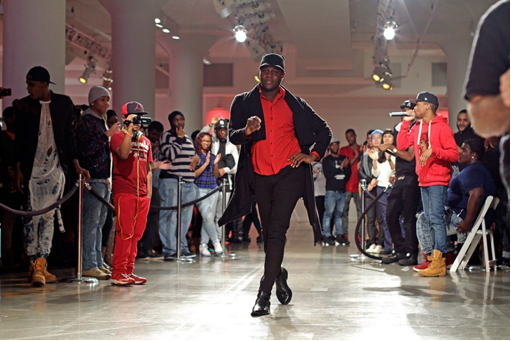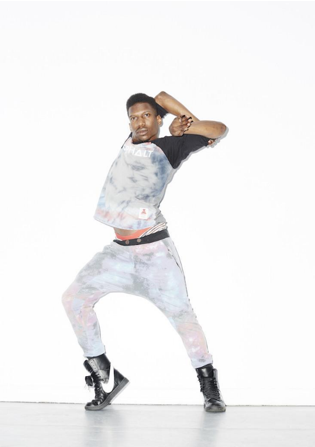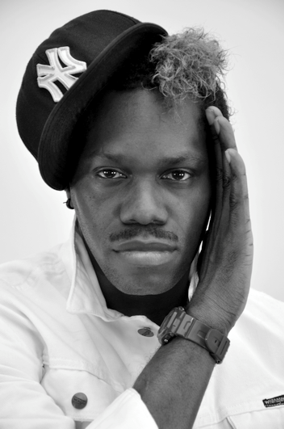
Voguing by definition: self-expression within the LGBTQ-community
Voguing is not a term heard much in common conversation, not even when talking about different disciplines in dancing. This has led to the simple question: What is voguing, where does it come from and in what different forms does it appear?
Introduction to voguing
Voguing is a dance that arose in the 1980s in Harlem, New York. It was created by young African American and Latino people of diverse genders and sexualities. The founders of voguing in Harlem started what is called the 'Ballroom Culture'. Ballroom houses form a safe space where freedom of gender identity and sexuality is allowed. These houses participate in balls, where they compete against each other in theatre performance and dance (Bailey, 2009). The dance has evolved stylistically and demographically, and is now performed by multiple famous entertainers and shown on television more often. Ballroom houses are popping up everywhere (We Love Dance, 2014).
Voguing was created by a subculture of young gay men in the 1980’s. Gender fluid–a term used often to describe voguers and a gender identity best described as ‘a dynamic mix of boy and girl’ (SonicJMC, 2007)–black and Latino young men frequented this dance style. The documentary Paris is Burning first put a spotlight on voguing 24 years ago (Hunt, 2014), and since then it has gained a lot of popularity over the years. This can be seen in the video clip for the song Vogue by pop artist Madonna.
As Hunt notes in the Guardian, voguing is an art that is inextricably linked with ideas of fashion, luxury, and social and economic mobility; its dramatic hand and leg movements are based on elements of classical ballet, jazz and modern dance techniques such as those founded by Martha Graham and Lester Horton–many voguers are actually professional dancers.
Members of the vogue community have several names for their culture, including the Ball World, the Ballroom Community, and the Ballroom Scene. Despite its name, this community should not be confused with cultures involving ballroom dances like the foxtrot. This huge community is a confederation of approximately seventy-five kinship groups that members call Houses. These Houses have contained nearly 8,000 members in over fifteen cities, predominantly along the North-Eastern coast of North America (Jackson, The Social World of Voguing, 2002).
How to vogue: gender, sexuality and rituals
As Jackson notes, all rituals and dancing in the Ballroom Scene embody members’ understanding of their global notion of gender and sexuality. Rather than the binary of man and woman, this community conceives of three sexes and four genders. The community’s three sexes are:
- Woman (one born with female sex characteristics);
- Man (one born with male sex characteristics)
- Intersex (one born with both male and female, or indeterminate sex characteristics).
The four genders of the Ballroom Scene are as follows:
- Butch Queens (biologically born males whose everyday appearance is masculinized but who nonetheless may act masculinized, hypermasculinized or effeminate);
- Femme Queens (male-to-female transgenders in various states of hormonal or surgical processes towards becoming female);
- Butches (female-to-male transgenders in various states of hormonal or surgical processes towards becoming male)
- omen (biologically born females with a range of masculinized and feminized conduct).
In terms of sexual identities there are lesbian, gay, bisexual, transgender, queer and more along the binary, also known as the LGBTQ+ community, which are the general notions of sexuality. These have nothing to do with the community’s three sexes and also exist outside of the voguing community. The above mentioned sexes are also the categories for competition during the ‘Ritual of the Ball’.
The Ritual of the Ball is the event when community members most embrace their own gendered and sexual meanings. Although community members mention that it contains elements of martial arts, most members consider voguing to be “dancing” like the movement presentations of the popular American Stage. Voguing is the only ritual tradition in the community that emphasizes wholebody improvisatory action. In the Ritual of the Ball, competitors get judged per category (mentioned above) on their performance in the different rituals. There are six main ritual traditions in the Ballroom culture. In addition to voguing, these traditions are Runway, Labels, Body, Face and Realness. Jackson describes three of these traditions as follows:
Figure 1: An example of 'Runway'.
Runway involves forward and backward processional action with minimal articulation of the upper body and simple patterns of pivot turns. Usually the performer has minimal action, with an “unbothered” or “cool” expression and energy. The posture of the body is largely vertical, except the spine appears to be slightly swayed because the preferred stance is to push the hips slightly forward when processing and to hang the upper spine back and high in the space around the body while the head stays in place.
Figure 2: An example of 'Body'
Body is a form of Runway. The emphasis here is on the presentation of a body shape that exemplifies a preconceived ideal within the community such as a “luscious” or voluptuous body, a thin “model’s body”, a muscular body, or even a stout, “big body”. This means they shake, flex, or draw heightened attention to particular body parts. The performers must “sell that body”.
Figure 3: An example of 'Face'.
Face is a variation of Body. Competitors walk very simply toward judges and present their faces for inspection. Judges look for an "unpainted" face (meaning one with no make-up) that is generally free of blemishes and "bonesnatched" (meaning graced with a balanced skeletal structure and equidistance between the eyes, nose, lips and mouth). Aquiline noses, thinner lips and other common white European and Euro-American features are not standards of facial beauty here, yet symmetry is a must. As in Body, performers may be called to “sell that face”. They then draw attention to parts of the face by licking their teeth, batting their eyelashes, framing sections of their face with their hands, or holding their faces at very close range and opening their mouths so that judges may inspect for blemishes, traces of make-up or crooked teeth.
These three traditions play an important role in the Ritual of the Ball, in addition to the remaining three mentioned above. These aspects are the most prominent during competitions. The movements help competitors embrace their beauty and thus their 'coming out of the closet'. Competing successfully in the Ritual of the Ball is all about accepting yourself.
Expression of the self
Voguing is a form of expressive dance, created in a time where being anything other than heterosexual was not accepted. Voguing is a lifestyle, wherein young men and women find a way to express their true selves without having to hide. Voguing is a tradition within the LGBTQ (Lesbian Gay Bisexual Transgender Queer) community and a way to truly embrace inner sexuality and gender through the dance and through competition to become self aware; above all, it promotes self confidence.
References
Bailey, E. A. (2009, April 23). Constructing Home and Family: How the Ballroom Community Supports African American GLBTQ Youth in the Face of HIV/AIDS. Retrieved November 30, 2016, from NCBI.
Hunt, K. (2014). How voguing came back into vogue. The Guardian.
Jackson, J. D. (2002). The Social World of Voguing. Journal for the Anthropological Study of Human Movement.
SonicJMC. (2007). Gender fluid. Urban Dictionary.
We Love Dance. (2014, Maart 23). adrenaline international vogue ball. Retrieved Nevember 30, 2016, from we love dance.